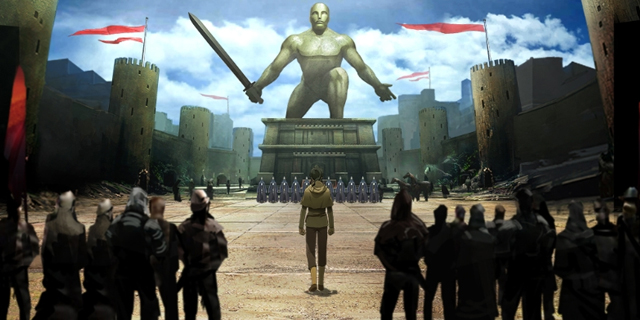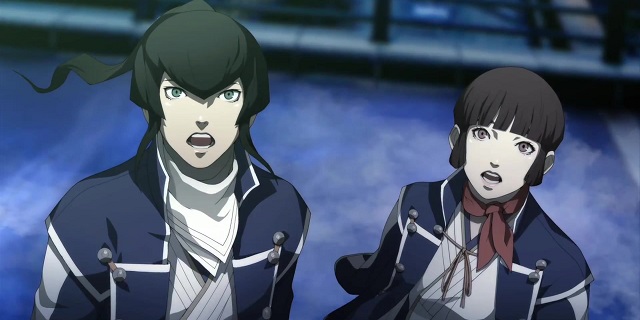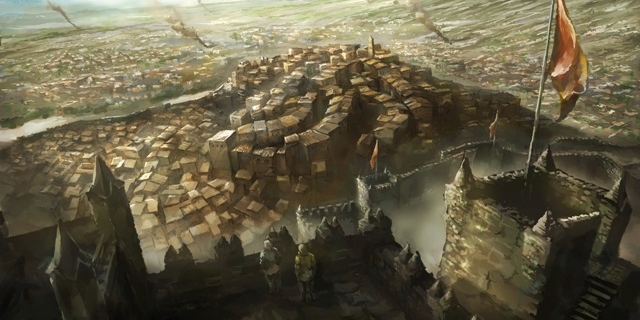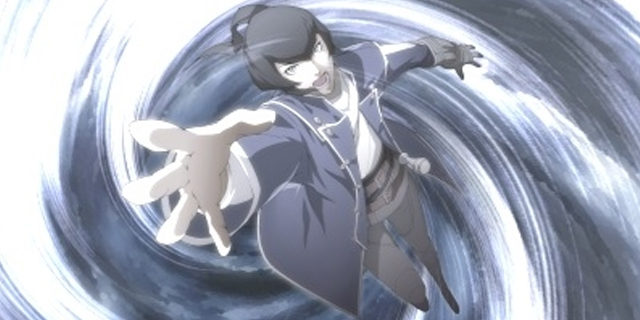
It’s crazy to think about how long Atlus’ popular Shin Megami Tensei franchise has been around, especially when you consider how much of the series is dominated by various spinoffs. Some of those spinoffs have undoubtedly eclipsed the popularity of the rest of the franchise, but that doesn’t mean fans haven’t been eagerly anticipating what Atlus has up its sleeves next for the mainline series. After a nearly decade-long wait, Shin Megami Tensei IV is finally here. If you’ve been desperate for the real follow-up to 2004’s Shin Megami Tensei: Nocturne, you’ll be happy to know the long wait was well worth it.
In the Kingdom of Mikado, you play as an up-and-coming samurai apprentice, sworn to protect the land from a potentially dangerous uprising of demons. You are joined by three fellow apprentices as you discover more about the land of Mikado itself, the origin of the new threat and the lands that lie beyond Mikado’s seemingly endless reach. Shin Megami Tensei IV’s story is not as detailed as the Persona series has become, but it is the most story-heavy entry in the main series, complete with a bevy of interesting heroes, villains and a few twists to keep you coming back for more. All told, it’s a strong narrative that doesn’t overpower the main draw of the series: the addictive, demon-fueled gameplay.
As with Nocturne, you control a single character throughout your journey and collect an assortment of demons to make up your party and assist on your many quests. You wander around the many dungeons and other environments in third-person, with enemy encounters appearing on screen similar to the recent Persona games. Areas are never gigantic or sprawling, but due to the game’s visuals, it can be a bit difficult to see some very small, but important, details and navigate through certain environments. This is especially true in the hub world, where you may often miss pathways that lead to your next objective. It’s a small issue, but one that can make traversal a hassle.

Battles consist of you and three other demons, which you can swap out for other demons on the fly. Battles play out like any traditional turn-based RPG, with you battling a variety of demons each with their own strengths and weaknesses. If you expose the enemy’s weakness, you gain an extra move, but the same happens for the enemies if they manage to strike a critical blow. Battles move fast and, since the series’ traditional random encounter system has been replaced, you never have to be too concerned with high encounter rates.
New to the series is the smirk status effect, which happens when you get a critical hit on an enemy or manage to dodge their attacks. This lasts a total of one turn, guarantees that character’s next attack will be a critical hit and also makes it easier to dodge the opponents’ oncoming blows. It’s a small but handy addition; it rewards you for discovering weaknesses, and it’s a nice counterbalance to the series’ tendency to have enemies gang up on you when you are critically wounded.
It wouldn’t be a Shin Megami Tensei game without demons to call your own. In the middle of battle, you can strike up a conversation with any of your foes and convince them to join your team. You are then presented with a series of dialogue choices, giving you a chance to negotiate with the demon to win them over. Sometimes demons simply require the right choices, while other times they desire material goods such as items, money or even the life of another demon. While this system still feels like a guessing game at times, once you learn the likes and dislikes of each demon type, you’ll more easily be able to convince most of them to side with you. It won’t always work out and can leave you open to attacks if negotiations go poorly, making it a nice risk-reward system that doesn’t always pay off, but it does present you with countless opportunities to earn new allies.

Browsing the app store
As you level up, you also unlock points to buy apps, special purchases that reward you with different abilities. They allow you to increase the experience you gain from fusions, give you more slots for new abilities (for you or for your demons), or recover HP and MP while walking, among other things. This store is constantly updated with new apps, so be on the lookout for abilities that may add small, but helpful changes.
The fusion system returns as well, with some user-friendly changes to make the process less tedious than usual. When you enter this menu, you are presented with three recommended fusions, many of which usually pan out for the best. If you don’t wish to experiment with different fusions, you have an opportunity to choose the ones presented to you, usually rewarding you with demons that are worth the trouble. You can, however, try out plenty of combinations in order to get the demon you are looking for, so you have many options available to you right from the start.
The best addition, which is carried over from Persona 4 Golden, allows you to choose your demon’s abilities from the pool of the demons being fused, allowing you to select from the best of both plus a handful of new powers. Usually you would be forced to stick with what was given to you or continually back out of the menu to see new combinations of abilities until you get the set you like. It removes the monotony from fusion and makes the whole process a lot faster as a result, especially since you can simply enter the fusion screen right from the menu at any time during gameplay.

You also have more customization over the main character’s abilities through whisper events. These are similar to Nocturne Magatama events, although with more options available to you. When demons level up and gain new abilities, sometimes a whisper event will occur, giving you the chance to inherit as many of that demon’s specific powers as you want. If you already have an ability the demon has, it will become more powerful as a result, and you can also overwrite any old abilities with new ones. You never have control over when these events occur, but being able to manage your own character’s abilities is always welcome.
Not only have fusions been simplified and your character more customizable, but the game as a whole has evolved to become more user-friendly. Not only can you can save anywhere and can discover plenty of teleporters which allow for fast travel, you also have a quest log which allows you to keep track of your current objectives and manage where you need to head next. I can’t count the number of times I ended up getting lost just trying to find my way to the next essential area, but thankfully the quest log always updates and offers hints in order to get you on your way.
In addition to main story objectives, the quest log also tracks challenge quests, which are essentially side quests you can complete in order to gain extra items, money and experience. These quests are not essential, but they offer a good number of different objectives if you need to take a break from story events. They also give you more reason to explore areas you might otherwise skip over. While Shin Megami Tensei IV is already chock full of content, having optional missions available give that content more of a structure, and allow you to feel like you are accomplishing something extra even if you are simply exploring.
While the game may be friendlier to those new to the series, this is not an easy game. Even as a franchise veteran, I found myself dying multiple times during the tutorial missions, and it took a while to fully grasp everything the game had to offer. Thankfully, on top of being able to save anywhere, the game allows you to continue after you die for a fee. It’s not a small sum of money, but if you forgot to save and made a good amount of progress, it is a crucial feature that will keep you from tossing your 3DS out the nearest window. Plus, if you die enough, you can drop the difficulty down. I wouldn’t recommend veterans try this, but newcomers might find the adjustable difficulty welcoming if they too are struggling with the beginning of this lengthy adventure.
The Shin Megami Tensei series is vast with many possible starting points, but if you’re looking for a game that sticks to the main formula and is more user-friendly than recent titles such as Strange Journey, Shin Megami Tensei IV is the game for you. It’s tough but fair, and thanks to plenty of smart changes to an already proven (and quite addictive) formula, this is one of the best entries in the series to date.
Pros: Strong story, many smart and user-friendly changes, excellent new mechanics
Cons: Visuals sometimes make navigation a hassle



















